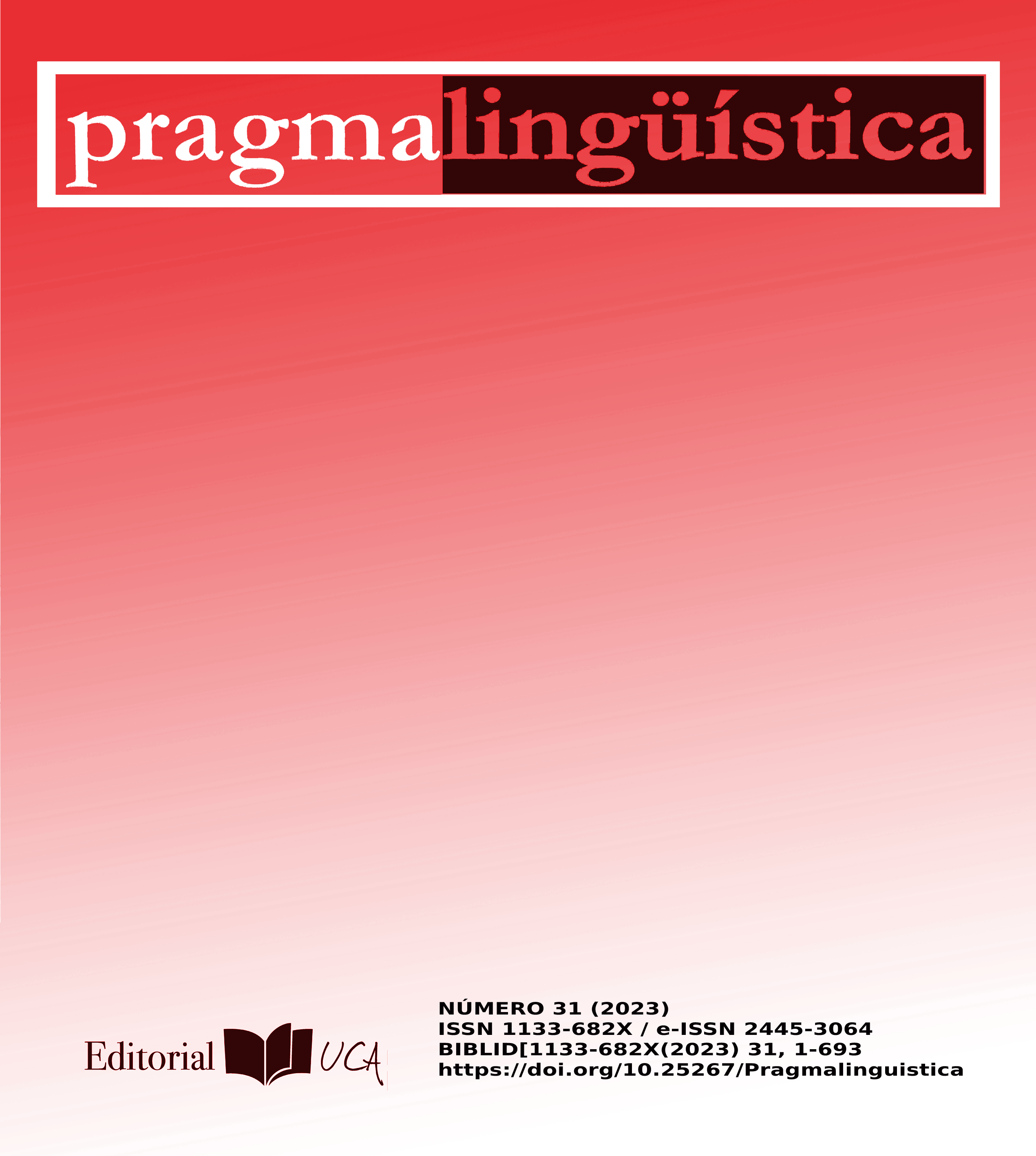An acoustic characterization of the taps in intervocalic contexts for forensic purposes

DOI
https://doi.org/10.25267/Pragmalinguistica.2023.i31.07Info
Abstract
Forensic linguistics is a branch of applied linguistics, that study the relationship between Language and law and inside of these areas of application is the Forensic Speaker identification. The forensic identification of speakers is a field of the forensic sciences that starts off facing certain difficulties inherent to the actual subject matter, the speech, given that speech is a behavioural biometric subject to different variability factors (Delgado Romero, 2005: 117). Thus, descriptive analysis of the acoustic aspects of speech are required to enable forensic experts to characterize a reference population. The main objective of this article is to describe the acoustics characteristics of the tap production in intervocalic position.
Keywords
Downloads
How to Cite
License
Copyright (c) 2023 María García Antuña

This work is licensed under a Creative Commons Attribution-NonCommercial-NoDerivatives 4.0 International License.
References
BLECUA FALGUERAS, B. (2001): Las vibrantes del español. Tesis doctoral. Barcelona: Universidad Autónoma de Barcelona. Disponible en: http://www.tesisenred.net/handle/10803/4859.
BLECUA, B., CICRES, J. y GIL, J. (2014): “Variación en las róticas del español y su implicación en la identificación del locutor”, Revista de Filología Románica, 31, pp. 13-35. https://doi.org/10.5209/rev_RFRM.2014.v31.n1.51021
DELGADO ROMERO, C. (2005): “Comentarios sobre el contexto actual de la identificación forense de locutores”, Turell, M. T. (ed.), Lingüística forense, lengua y derecho. Conceptos, métodos y aplicaciones, Barcelona: Institut Universitari de Lingüística Aplicada, pp. 113-130.
DELGADO ROMERO, C. (2020): “Comparación forense del habla: el cambio conceptual”, Ciencia Policial. Revista Técnica del Cuerpo Nacional de Policía, 158, pp. 61-74.
DELGADO ROMERO, C., MÁRQUEZ FUNES, M. C., OLIVAS FERNÁNDEZ, M. C. y BARRIOS ÁLVAREZ, L. (2009): “Identificación forense de locutores (I.F.L.): categorización de parámetros acústicos y fono-articulatorios del español”, Revista Española de Lingüística, 39(1), pp. 33-60.
DRYGAJLO, A. et al. (2015): Methodological Guidelines for Best Practice in Forensic Semiautomatic and Automatic Speaker Recognition, ENFSI. Disponible en: https://enfsi.eu/docfile/methodological-guidelines-for-best-practice-in-forensic-semiautomatic-and-automatic-speaker-recognition/.
GIBBONS, J. y TURELL, M. T. (eds.) (2008): Dimensions of Forensic Linguistics, Ámsterdam: John Benjamins.
GIMÉNEZ GARCÍA, R., JIMÉNEZ ARAGÓN, G. y QUERALT, S. (2019): “El análisis de géneros textuales con fines forenses: nuevas aplicaciones de la pragmática en la sociedad”, Pragmalingüística, 27, pp. 54-70. https://doi.org/10.25267/Pragmalinguistica.2019.i27.03
MARTÍNEZ CELDRÁN, E. (1984): Fonética, Barcelona: Teide.
MARTÍNEZ CELDRÁN, E. (1998): Análisis espectrográficos de los sonidos del habla, Barcelona: Ariel.
NAVARRO TOMÁS, T. (1918[2004]): Manual de pronunciación española, Madrid: Consejo Superior de Investigacio-nes Científicas.
Orden A-1999-14371, de 24 de junio de 1999, por la que se amplía la de 26 de julio de 1994, creando y regulan-do el fichero automatizado «LOCUPOL», sobre análisis de voz. Boletín Oficial del Estado, 155, de 30 de junio de 1999, p. 24734. Disponible en https://www.boe.es/eli/es/o/1999/06/24/(1).
QUERALT, S. (2020): “El uso de recursos tecnológicos en lingüística forense”, Pragmalingüística, 28, pp. 212-237. https://doi.org/10.25267/Pragmalinguistica.2020.i28.11
RAE (2011): Nueva Gramática de la Lengua Española. Fonética y Fonología, Madrid: Espasa-Calpe.
STEWART MORRISON G. et al. (2016): “INTERPOL survey of the use of speaker identification by law enforcement agencies”, Forensic Science International, 263, pp. 92-100. https://doi.org/10.1016/j.forsciint.2016.03.044






